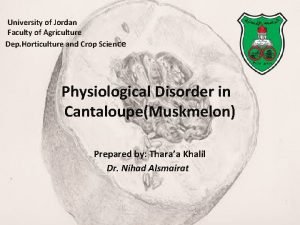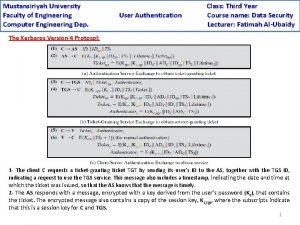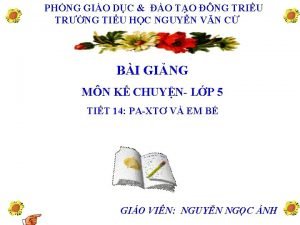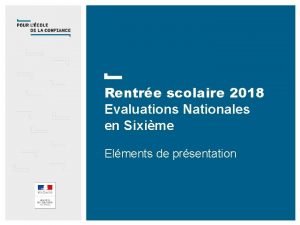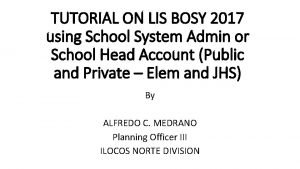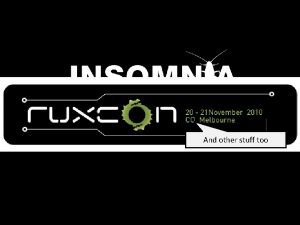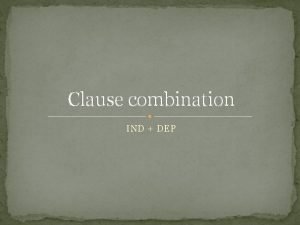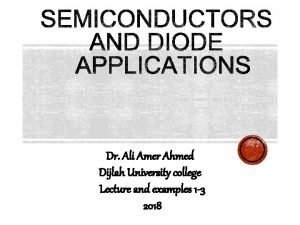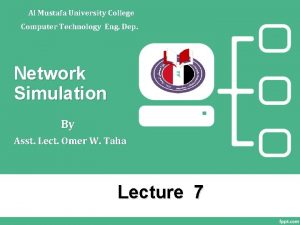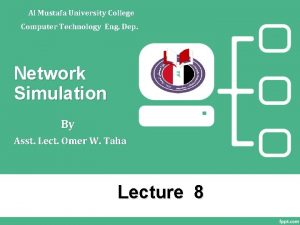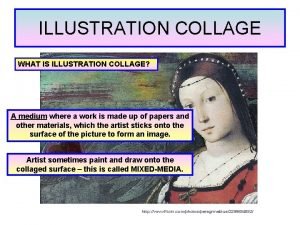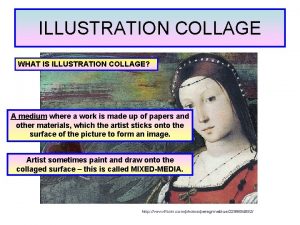Dijlah University Collage Computer Tech Eng Dep Digital



























- Slides: 27

Dijlah University Collage Computer Tech. Eng. Dep. Digital Communications Lecture - 3 Instructor Dr. Ahmed Abd Al-Kareem Ali Lecture notes Prepared by Dr. Bilal Shams Dept. of Electrical & computer Engg, Kohat University of Sc. & Tech, Kohat. ﺍﻻﻟﻜﺘﺮﻭﻧﻲ ﻧﻈﺎﻡ ﺍﻟﻤﺤﺎﺿﺮﺍﺕ


Chapter 2: Formatting and Baseband Modulation 1. Baseband Systems 2. Formatting Textual Data (Character Coding) 3. Messages, Characters and Symbols 4. Formatting of Analog Information 1. 2. 6 Pulse Code Modulation IPCM) 2. 2. 5 Sources of Corruption 1. Uniform and Nonuniform Quantization 2. Baseband Modulation 3. Correlative Coding: Not covered ﺍﻻﻟﻜﺘﺮﻭﻧﻲ ﻧﻈﺎﻡ ﺍﻟﻤﺤﺎﺿﺮﺍﺕ



2. 2 Formatting Textual Data (Character Coding) Character Coding (Textual Information) A textual information is a sequence of alphanumeric characters Alphanumeric and symbolic information are encoded into digital bits using one of several standard formats, e. g, ASCII, EBCDIC ﺍﻻﻟﻜﺘﺮﻭﻧﻲ ﻧﻈﺎﻡ ﺍﻟﻤﺤﺎﺿﺮﺍﺕ

2. 3 Messages, Characters and Symbols Example: Message: USA In ASCII alphabets, numbers, and symbols are encoded using a 7 bit code A total of 27 = 128 different characters can be represented using a 7 -bit unique ASCII code (see ASCII Table, Fig. 2. 3) ﺍﻻﻟﻜﺘﺮﻭﻧﻲ ﻧﻈﺎﻡ ﺍﻟﻤﺤﺎﺿﺮﺍﺕ



2. 4 Formatting Analog Information Structure of Digital Communication Transmitter Analog to Digital Conversion ﺍﻻﻟﻜﺘﺮﻭﻧﻲ ﻧﻈﺎﻡ ﺍﻟﻤﺤﺎﺿﺮﺍﺕ

Analog-to-digital conversion is (basically) a 2 step process: Sampling Convert from continuous-time analog signal xa(t) to discretetime continuous value signal x(n) Is obtained by taking the “samples” of xa(t) at discrete-time intervals, Ts Quantization Convert from discrete-time continuous valued signal to discrete time discrete valued signal ﺍﻻﻟﻜﺘﺮﻭﻧﻲ ﻧﻈﺎﻡ ﺍﻟﻤﺤﺎﺿﺮﺍﺕ

Sampling Sampling is the processes of converting continuous-time analog signal, xa(t), into a discrete-time signal by taking the “samples” at discrete-time intervals Sampling analog signals makes them discrete in time but still continuous valued If done properly (Nyquist theorem is satisfied), sampling does not introduce distortion Sampled values: The value of the function at the sampling points Sampling interval: The time that separates sampling points (interval b/w samples), Ts If the signal is slowly varying, then fewer samples per second will be required than if the waveform is rapidly varying So, the optimum sampling rate depends on the maximum frequency component present in the signal ﺍﻻﻟﻜﺘﺮﻭﻧﻲ ﻧﻈﺎﻡ ﺍﻟﻤﺤﺎﺿﺮﺍﺕ

Sampling Rate (or sampling frequency fs): The rate at which the signal is sampled, expressed as the number of samples per second (reciprocal of the sampling interval), 1/Ts = fs Nyquist Sampling Theorem (or Nyquist Criterion): If the sampling is performed at a proper rate, no info is lost about the original signal and it can be properly reconstructed later on Statement: “If a signal is sampled at a rate at least, but not exactly equal to twice the max frequency component of the waveform, then the waveform can be exactly reconstructed from the samples without any distortion” fs 2 fmax ﺍﻻﻟﻜﺘﺮﻭﻧﻲ ﻧﻈﺎﻡ ﺍﻟﻤﺤﺎﺿﺮﺍﺕ

Sampling If fs < 2 B, aliasing (overlapping of the spectra) results If signal is not strictly bandlimited, then it must be passed through Low Pass Filter (LPF) before sampling Fundamental Rule of Sampling (Nyquist Criterion) The value of the sampling frequency fs must be greater than twice the highest signal frequency fmax of the signal Types of sampling Ideal Sampling Natural Sampling Flat-Top Sampling ﺍﻻﻟﻜﺘﺮﻭﻧﻲ ﻧﻈﺎﻡ ﺍﻟﻤﺤﺎﺿﺮﺍﺕ

Ideal Sampling ( or Impulse Sampling) Is accomplished by the multiplication of the signal x(t) by the uniform train of impulses (comb function) Consider the instantaneous sampling of the analog signal x(t) Train of impulse functions select sample values at regular intervals xs (t) x(t) (t n. Ts ) n x(n. Ts ) (t n. Ts ) n ﺍﻻﻟﻜﺘﺮﻭﻧﻲ ﻧﻈﺎﻡ ﺍﻟﻤﺤﺎﺿﺮﺍﺕ (2. 5 )

Ideal Sampling ( or Impulse Sampling) Take Fourier Transform (frequency convolution) X (f) s 1 X ( f )* Ts (t n. T ) s n This results in: X (f) s 1 X ( f )* Ts X (f) s 1 Ts ﺍﻻﻟﻜﺘﺮﻭﻧﻲ s ( f nf s ), f s 2 n X ( f nf ) s n ﻧﻈﺎﻡ ﺍﻟﻤﺤﺎﺿﺮﺍﺕ 1 n X(f Ts n ) Ts

Ideal Sampling ( or Impulse Sampling) This shows that the Fourier Transform of the sampled signal is the Fourier Transform of the original signal at rate of 1/Ts ﺍﻻﻟﻜﺘﺮﻭﻧﻲ ﻧﻈﺎﻡ ﺍﻟﻤﺤﺎﺿﺮﺍﺕ

Ideal Sampling ( or Impulse Sampling) This means that the output is simply the replication of the original signal at discrete intervals, e. g ﺍﻻﻟﻜﺘﺮﻭﻧﻲ ﻧﻈﺎﻡ ﺍﻟﻤﺤﺎﺿﺮﺍﺕ

Ideal Sampling ( or Impulse Sampling) As long as fs> 2 fm, no overlap of repeated replicas X(f - n/Ts) will occur in Xs(f) Minimum Sampling Condition: fs fm fs 2 fm Sampling Theorem: A finite energy function x(t) can be completely reconstructed from its sampled value x(n. Ts) with 2 f (t n. Ts ) sin 2 Ts x(t) Ts x(n. T s) (t n. Ts n ) T s x(n. Ts ) sin c(2 fs (t n. Ts )) n provided that => ﺍﻻﻟﻜﺘﺮﻭﻧﻲ ﻧﻈﺎﻡ ﺍﻟﻤﺤﺎﺿﺮﺍﺕ 1 1 T s fs 2 fm

Ts is called the Nyquist interval: It is the longest time interval that can be used for sampling a bandlimited signal and still allow reconstruction of the signal at the receiver without distortion ﺍﻻﻟﻜﺘﺮﻭﻧﻲ ﻧﻈﺎﻡ ﺍﻟﻤﺤﺎﺿﺮﺍﺕ

Practical Sampling In practice we cannot perform ideal sampling It is not practically possible to create a train of impulses Thus a non-ideal approach to sampling must be used We can approximate a train of impulses using a train of very thin rectangular pulses: x p (t) n t n. Ts Note: Fourier Transform of impulse train is another impulse train Convolution with an impulse train is a shifting operation ﺍﻻﻟﻜﺘﺮﻭﻧﻲ ﻧﻈﺎﻡ ﺍﻟﻤﺤﺎﺿﺮﺍﺕ

Natural Sampling If we multiply x(t) by a train of rectangular pulses xp(t), we obtain a gated waveform that approximates the ideal sampled waveform, known as natural sampling or gating (see Figure 2. 8) xs (t ) x (t ) x p (t ) x (t c n e j 2 nfs t n ) X s ( f ) [ x (t ) x p (t )] j 2 nfs t c [ x (t )e ] n n ﺍﻻﻟﻜﺘﺮﻭﻧﻲ ﻧﻈﺎﻡ ﺍﻟﻤﺤﺎﺿﺮﺍﺕ cn X [ f n f s n ]

Each pulse in xp(t) has width Ts and amplitude 1/Ts The top of each pulse follows the variation of the signal being sampled Xs (f) is the replication of X(f) periodically every fs Hz Xs (f) is weighted by Cn Fourier Series Coeffiecient The problem with a natural sampled waveform is that the tops of the sample pulses are not flat It is not compatible with a digital system since the amplitude of each sample has infinite number of possible values Another technique known as flat top sampling is used to alleviate this problem ﺍﻻﻟﻜﺘﺮﻭﻧﻲ ﻧﻈﺎﻡ ﺍﻟﻤﺤﺎﺿﺮﺍﺕ

Flat-Top Sampling Here, the pulse is held to a constant height for the whole sample period Flat top sampling is obtained by the convolution of the signal obtained after ideal sampling with a unity amplitude rectangular pulse, p(t) This technique is used to realize Sample-and-Hold (S/H) operation In S/H, input signal is continuously sampled and then the value is held for as long as it takes to for the A/D to acquire its value ﺍﻻﻟﻜﺘﺮﻭﻧﻲ ﻧﻈﺎﻡ ﺍﻟﻤﺤﺎﺿﺮﺍﺕ


Taking the Fourier Transform will result to X s ( f ) [ xs (t )] P ( f ) x(t ) (t n. Ts ) n 1 P(f) (f Ts n X(f)* 1 P( f ) X ( f nf s ) Ts n where P(f) is a sinc function ﺍﻻﻟﻜﺘﺮﻭﻧﻲ ﻧﻈﺎﻡ ﺍﻟﻤﺤﺎﺿﺮﺍﺕ nfs )

Flat top sampling (Frequency Domain) Flat top sampling becomes identical to ideal sampling as the width of the pulses become shorter ﺍﻻﻟﻜﺘﺮﻭﻧﻲ ﻧﻈﺎﻡ ﺍﻟﻤﺤﺎﺿﺮﺍﺕ
 Funksiyaning eng katta qiymati
Funksiyaning eng katta qiymati Low tech assistive technology
Low tech assistive technology Criterio de pista compensada
Criterio de pista compensada Dep horticulture
Dep horticulture Dep
Dep Dep
Dep Cpu dep
Cpu dep Jini surrogate architecture
Jini surrogate architecture Xxxxseh
Xxxxseh Dep email
Dep email Dep environmental education grants
Dep environmental education grants Giô dép
Giô dép Https eval depp taocloud fr
Https eval depp taocloud fr Avt dep
Avt dep Dep hkps
Dep hkps Lis dep
Lis dep Dep training modules
Dep training modules Depuser
Depuser Bypass dep
Bypass dep Dep clause
Dep clause Timex digital heart rate monitor
Timex digital heart rate monitor Dilara digital tech
Dilara digital tech Hog tech university
Hog tech university Louisiana tech university engineering
Louisiana tech university engineering Texa tech university
Texa tech university Czech tech university
Czech tech university Ttu business services
Ttu business services Louisiana tech computer science
Louisiana tech computer science



